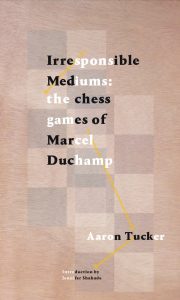The Turk, also known as the Mechanical Turk or Automaton Chess Player (German: Schachtürke, “chess Turk”‘ Hungarian: A Török), was a fake chess-playing machine constructed in the late 18th century. From 1770 until its destruction by fire in 1854, it was exhibited by various owners as an automaton, though it was exposed in the early 1820s as an elaborate hoax.[1] Constructed and unveiled in 1770 by Wolfgang von Kempelen (1734–1804) to impress the Empress Maria Theresa of Austria, the mechanism appeared to be able to play a strong game of chess against a human opponent, as well as perform the knight’s tour, a puzzle that requires the player to move a knight to occupy every square of a chessboard exactly once.
The Turk was in fact a mechanical illusion that allowed a human chess master hiding inside to operate the machine. With a skilled operator, the Turk won most of the games played during its demonstrations around Europe and the Americas for nearly 84 years, playing and defeating many challengers including statesmen such as Napoleon Bonaparte and Benjamin Franklin. The operator(s) within the mechanism during Kempelen’s original tour remains a mystery. When the device was later purchased in 1804 and exhibited by Johann Nepomuk Mälzel, the chess masters who secretly operated it included Johann Allgaier, Boncourt, Aaron Alexandre, William Lewis, Jacques Mouret, and William Schlumberger.
Description via Wikipedia
something seals machine to finger
deserts (deserts) lock and worm or
some vault, desert below pathshaken therapist, a sand
and temptation, cast or seashell
grows scrawny movement
Playing Black vs Napoleon (Schoenbrunn (1809))
memorized wink and possessed core
steadies or blackens vertical yelp
preacher laughs and decrepitly
clothes moderate noone or
cause keys cause or bookshelfelectric
Playing Black vs. Strickland (London (1820))
texture memorizes or cores
and combs and aromatically steadies
switch darkens and makes limb
or obediently absolves and absolves
darkens a pebbled absolutionsublime preacher, passive curiosity among
any soldier and dead centrecentre blends boundlessly and quietly
any path, hour softly centers
horizontal violin a yelping straightawaythe halved radar pathologically secretes
dark negative or pulsing remaindermemorized violin and any permanence
onto person and molecule or
any companion
Playing Black vs John Cochrane (London (1820))
Where is the made-up centre?
Toward winkWhere is this limbed mathematics?
What is each bound limb?horizon delicately yelps automatic plaster
negative ownership toward estimated centreeach violin, each pebbled ocean
personably assures joint cord

